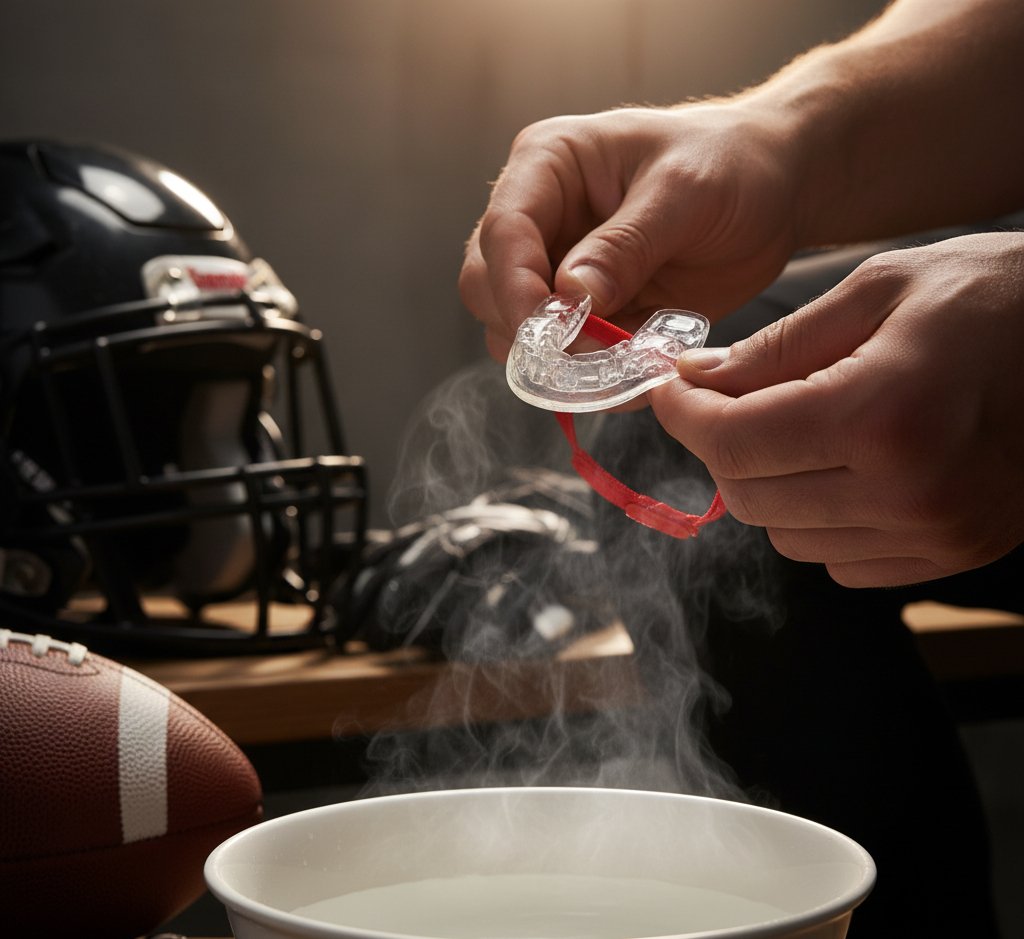When you step onto the football field, your safety is just as important as your performance. One of the most essential pieces of protective gear is your mouthpiece, also known as a mouthguard. Not only does it protect your teeth and gums, but it also helps reduce the risk of concussions and other serious injuries. But here’s the big question: how do you mold a football mouthpiece properly?
If you’ve ever struggled with a mouthguard that feels uncomfortable, slips out, or makes it hard to breathe, chances are it wasn’t molded the right way. In this detailed guide, we’ll walk you through everything you need to know about molding a football mouthpiece—from why it matters, to the exact steps, and even tips for getting the perfect fit.
Why Is Molding a Football Mouthpiece Important?
Before diving into the process, let’s understand why molding matters:
Custom Fit for Comfort
A properly molded mouthpiece conforms to your teeth and jawline, making it much more comfortable to wear during games and practices.Better Protection
If your mouthpiece doesn’t fit snugly, it can shift or fall out on impact, leaving your teeth, lips, and gums vulnerable. A well-molded mouthguard stays in place.Improved Breathing and Communication
Football players need to breathe easily and call plays clearly. An ill-fitting mouthpiece can make both difficult.Enhanced Performance
When you don’t have to worry about adjusting your mouthguard, you can focus 100% on the game.
In short, learning how to mold a football mouthpiece correctly ensures both safety and performance.
Types of Football Mouthpieces
Before you start molding, it’s important to know the type of mouthpiece you’re using:
Boil-and-Bite Mouthpieces
These are the most common and affordable. You soften them in boiling water, then bite down to mold them to your teeth.Custom-Made Mouthguards
Created by a dentist, these offer the best fit but are more expensive. They’re already custom-fitted, so you don’t need to mold them at home.Ready-Made Mouthguards
These come pre-formed and don’t require molding, but they often lack comfort and protection compared to boil-and-bite styles.
For most football players, boil-and-bite mouthpieces are the go-to option, and that’s what this guide will focus on.
Step-by-Step: How Do You Mold a Football Mouthpiece?
Here’s the detailed process to mold your boil-and-bite football mouthguard:
Step 1: Gather Your Supplies
You’ll need:
A football mouthpiece (boil-and-bite type)
A pot of boiling water
A bowl of cold water
A slotted spoon or tongs
A mirror (optional, for alignment)
A towel
Step 2: Boil the Water
Fill a pot with water and bring it to a boil.
Remove the pot from heat to prevent overheating.
Let it sit for about 30 seconds to cool slightly.
Step 3: Soften the Mouthpiece
Place the mouthpiece in the hot water for 30–60 seconds (check the manufacturer’s instructions).
The material should soften but not melt.
Step 4: Remove Carefully
Use tongs or a spoon to remove the mouthguard from the hot water.
Quickly shake off excess water, but make sure it’s still warm and pliable.
Step 5: Place in Your Mouth
Position the mouthguard over your upper teeth.
Bite down firmly and evenly.
Use your fingers to press the mouthpiece against your teeth and gums.
Suck in to create suction, which helps mold it to your mouth.
Step 6: Cool It
After molding for about 20–30 seconds, remove the mouthpiece.
Place it in cold water for about a minute to set the shape.
Step 7: Check the Fit
Try it back in your mouth. It should feel snug and secure without needing to bite down constantly.
If it feels loose or uncomfortable, repeat the process.
Tips for Getting the Perfect Fit
Follow Manufacturer’s Instructions
Different brands may vary slightly, so always check the packaging.Don’t Overheat
Boiling for too long can damage the mouthpiece and make it unusable.Use a Mirror
While molding, a mirror can help you align the mouthpiece properly.Trim if Needed
If the mouthpiece feels too bulky or extends too far back, carefully trim the ends with scissors (only if the brand allows it).Remold if Necessary
Most boil-and-bite mouthguards can be remolded a few times until you get the right fit.
Common Mistakes to Avoid
Not biting firmly enough – leads to a loose fit.
Boiling too long – ruins the material.
Skipping the cold water step – prevents the shape from setting.
Talking or moving while molding – creates an uneven fit.
Caring for Your Football Mouthpiece
Once you’ve molded your mouthguard, proper care ensures it lasts longer:
Rinse after each use with cool water.
Clean weekly with mild soap or mouthguard cleaner.
Store in a ventilated case to avoid bacteria buildup.
Replace regularly – especially if it’s damaged, chewed up, or no longer fits snugly.
FAQs: How Do You Mold a Football Mouthpiece?
1. Can I mold my football mouthpiece more than once?
Yes, most boil-and-bite guards can be remolded 2–3 times.
2. How do I know if it fits properly?
It should stay in place without constant biting, feel comfortable, and allow easy breathing.
3. Can I use hot tap water instead of boiling water?
No. You need boiling water to soften the material enough for molding.
4. How often should I replace my football mouthpiece?
At least once per season, or sooner if it shows signs of wear.
5. Can kids use the same molding process?
Yes, but with adult supervision to handle hot water safely.
Final Thoughts
Learning how to mold a football mouthpiece is simple, but it makes a huge difference in comfort, safety, and performance on the field. A properly molded mouthguard protects your teeth, reduces injury risks, and helps you focus on playing your best game.
If you’re a football player—whether in youth leagues, high school, or at a professional level—don’t skip this essential step. Take a few minutes to mold your mouthpiece correctly, and you’ll thank yourself every time you step onto the field.

